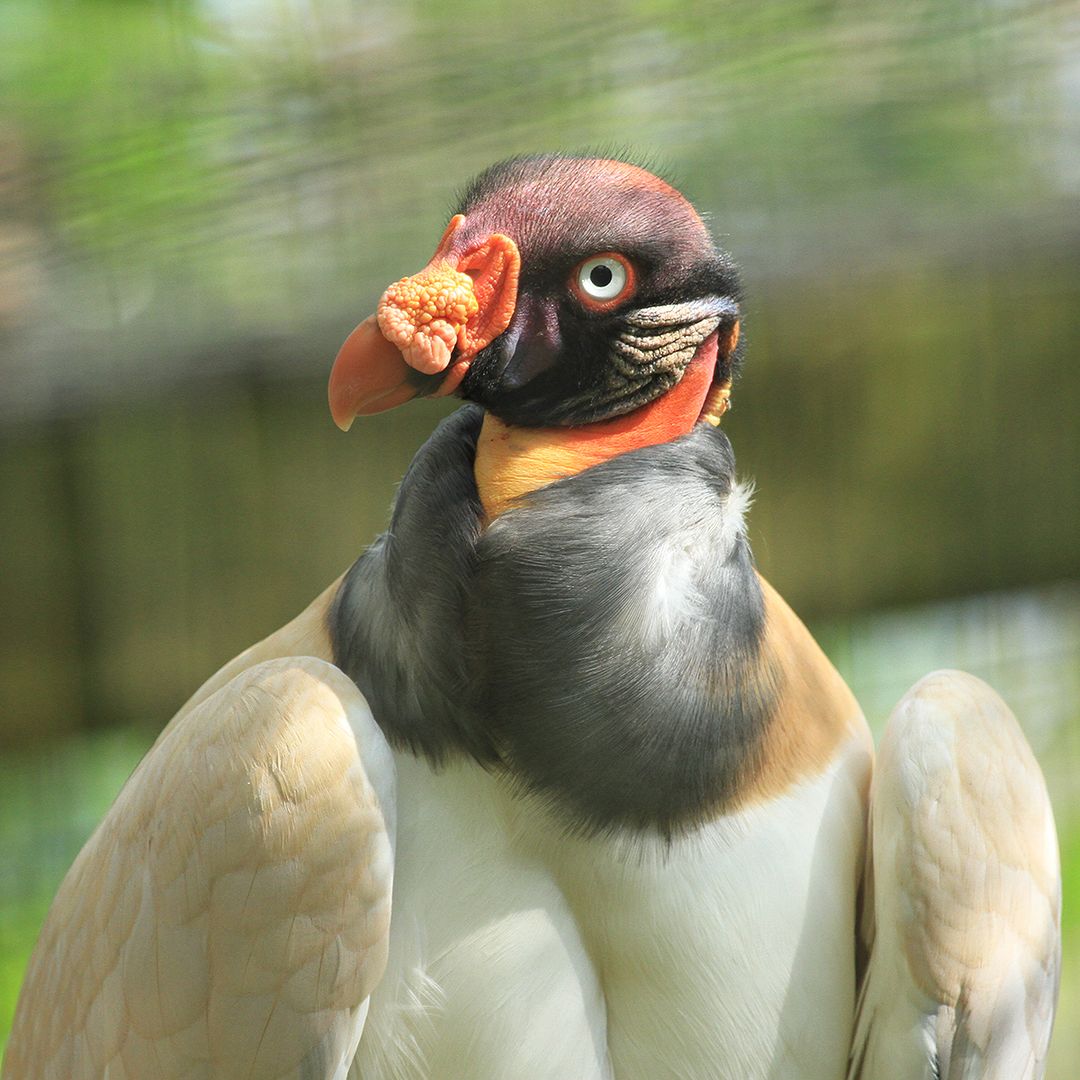Summary:
1. Introduction to the King vulture and its unique characteristics
2. The absence of a syrinx in King Vultures
3. Communication methods of King Vultures
4. Surprising adaptations in vulture vocalizations
5. The significance of hisses and grunts in King vulture behavior
Have you ever heard of the King vulture? This magnificent bird, known for its vibrant plumage and majestic presence, holds some fascinating secrets. One of the most intriguing aspects of the King vulture is its lack of a syrinx, which affects its ability to produce complex vocalizations. This article will delve into the details of this unique characteristic and explore how these birds communicate through simple hisses and grunts.
The King vulture, scientifically known as Sarcoramphus papa, is a large bird native to the Americas. Its strikingly colorful appearance, featuring a mixture of red, orange, yellow, and white feathers on its head and neck, stands out amongst its avian counterparts. However, it is not just its appearance that sets it apart but also how it communicates.
Unlike many birds, King vultures lack a syrinx. The syrinx is the vocal organ found in most birds, producing complex melodies and songs. Without this magnetic structure, King vultures are limited in their vocal abilities, only capable of making simple hisses and grunts. So why did these majestic birds evolve in such a way?
It is believed that the absence of a syrinx in King vultures may have resulted from their unique dietary habits. These birds are primarily scavengers, feeding on carrion left behind by other animals. The lack of a syrinx may be a trade-off for the adaptations necessary to thrive in their scavenging lifestyle. By not investing energy in complex vocalizations, King vultures can focus on other essential activities, such as flying long distances and locating food sources.
Despite their limited vocal repertoire, King vultures have developed various methods of communication. Hisses and grunts are crucial in their social interactions and defense mechanisms. These simple vocalizations convey various messages, including aggression, warning, or territorial claims.
Interestingly, studies have shown that the acoustic properties of vulture hisses and grunts differ from those of other bird vocalizations. For example, the King vulture’s hisses are characterized by a distinctive hissing sound produced by air forced through the glottis. This unique acoustic signature sets them apart from other birds and allows them to communicate effectively within their species.
Moreover, King vultures rely on vocalizations and visual displays to communicate with each other. They engage in elaborate physical behaviors, such as head bobbing, wing flapping, and displaying their colorful plumage. These visual displays and limited vocalizations create a diverse and captivating language unique to King Vultures.
The significance of hisses and grunts in King’s vulture behavior cannot be overstated. They play a vital role in establishing dominance hierarchies within their social groups, signaling intentions during mating rituals, and even defining territorial boundaries. The simplicity of their vocalizations does not hinder their ability to navigate complex social dynamics and maintain cohesive relationships.
In conclusion, the King vulture’s lack of a syrinx presents a fascinating case of adaptation in the avian world. While other birds may rely on elaborate songs and melodies to communicate, these fantastic creatures have evolved to make do with a limited range of hisses and grunts. Through these seemingly simple vocalizations and stunning visual displays, the King vulture can navigate its complex social interactions and thrive in its scavenging lifestyle. Next time you encounter a King vulture, take a moment to appreciate its unique form of communication and the mysteries behind its captivating presence.
*****
Source Description
King vultures lack a syrinx, which means they can only make simple hisses and grunts.


